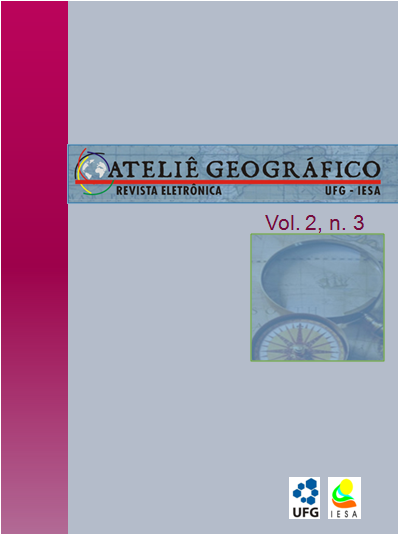ZONING, PLANNING AND MANAGEMENT OF CULTURALLY FRONTIER TERRITORIES. THE CASE OF THE COFFEE ZONE CEMETERIES
DOI:
https://doi.org/10.5216/ag.v2i3.5332Abstract
The development of the topics proposed here, is focused on answering one of the objectives of the frame research project in which the master's thesis will be registered: "From pitaphs, memories and rituals: cemeteries as an aesthetic space and urban model, a symbolic microcosmos. Case studies in the Colombian Coffee Area" presented to COLCIENCIAS by the research groups Territorialidades of the Universidad de Caldas, and Pensamiento Ambiental (Environmental Thinking) from the Universidad Nacional de Colombia, Manizales Campus. Said work is based on two basic components: 1) The way how the cemeteries ordered, planned and managed by territorial zoning plans, and 2) the identification of spatial referents within each cemetery -from ritual practices, architectural zoning and aesthetic representations- that can give an account of differentiated identities of the social groups of the municipalities and the region where said cemeteries are located. Key words: Cemeteries, Colombian Coffee Zone, zoning, planning and urban management, spatial referents of identity.Downloads
Download data is not yet available.
Downloads
Published
2008-12-24
How to Cite
LÓPEZ, Paula Andrea Velásquez; CASTAÑO, David Esteban Molina. ZONING, PLANNING AND MANAGEMENT OF CULTURALLY FRONTIER TERRITORIES. THE CASE OF THE COFFEE ZONE CEMETERIES. Ateliê Geográfico Journal, Goiânia, v. 2, n. 3, p. 19–32, 2008. DOI: 10.5216/ag.v2i3.5332. Disponível em: https://revistas.ufg.br/atelie/article/view/5332. Acesso em: 27 dec. 2025.
Issue
Section
Articles
License
Autores que publicam nesta revista concordam com os seguintes termos:- Autores mantém os direitos autorais e concedem à revista o direito de primeira publicação, com o trabalho simultaneamente licenciado sob a Licença Creative Commons Attribution que permite o compartilhamento do trabalho com reconhecimento da autoria e publicação inicial nesta revista.
- Os autores não serão remunerados pela publicação de trabalhos na Revista Ateliê Geográfico. Além disso, os conteúdos publicados são de inteira e exclusiva responsabilidade de seus autores, ainda que reservado aos editores o direito de proceder a ajustes textuais e de adequação às normas da publicação.
- Autores têm permissão e são estimulados a divulgar seu trabalho online (ex.: em repositórios institucionais ou na sua página pessoal), já que isso pode gerar alterações produtivas, bem como aumentar o impacto e a citação do trabalho publicado (Veja O Efeito do Acesso Livre).


